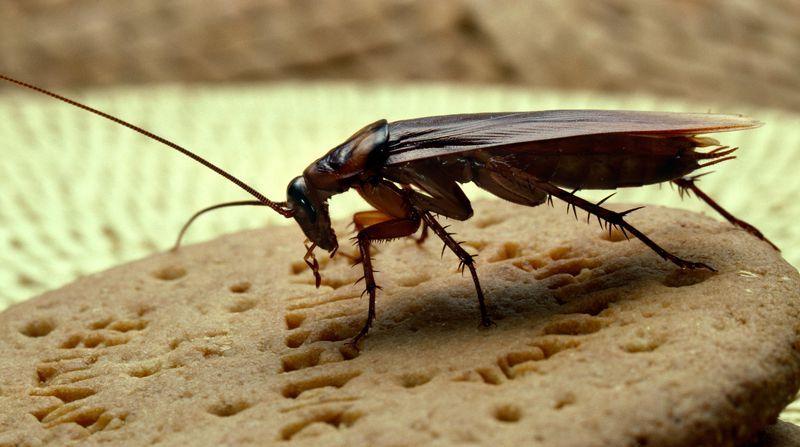Stored product pests are the pests which lay their eggs in your stored food & other products. Generally this is dry type food like flour, rice, pasta, grain, dried nuts & fruit, etc. They lay their eggs in these products so that when the larvae hatch they will have something ready to feed on & grow into the adult. We mainly think of them in food products, however the Drugstore Beetle is a very common stored product pest which attacks woollen and paper products.
Typically (and as an example):
Cockroaches will lay around 50 eggs at a time & the eggs will hatch in about 100 days;
Weevils will lay anywhere from 30 - 250 eggs & the eggs will hatch in about 1 month (they lay 1 egg per grain);
Moths (like so called “Pantry Moths”) will lay around 400 eggs & the eggs will hatch to be larvae in about 7 days;
& that’s just a few (& there will definitely be more than 1 lonely cockroach or weevil laying eggs at one time).
If these tasty stored products are not stored correctly ie: lids are left off the jars, bins or other storage containers, if paper packaging is not sealed correctly at all joints, if tears in paper packs are not repaired & spills not cleaned up etc, then these pests will find their way in & lay their eggs. The other thing that these stored product pests like is a little warmth & as the products are all shelf stable, that’s generally where we store them – in ambient temperature, on the shelf. If the products are stored in a cool place this is often a deterrent to the pest as it will not be warm enough for their eggs to hatch.
Once the larvae hatch they will start to feed on the product (the flour, rice, dried fruit, or other) rendering the product unusable. Many pests leave similar to a “spiders webbing” in product, with others you may be able to see the tiny adult pests or wriggling larvae, or once they have laid their eggs, the dead bodies of the adults may be visible. Also look for small holes in packaging where they may have chewed their way into the pack.
These pests can multiply quickly & cause many hundreds of dollars of stock loss in commercial storage areas.
As many chemical methods are not advisable without strict controls, the main method of control is frequent inspections & once an infestation (however large or small) is found, then take action. If using chemicals becomes necessary it is a good idea to move the stock before using the chemical to avoid contamination, make sure it is fit for purpose, also follow all of the chemical manufacturer’s advice. If using baits – place them a little away from the product so that you are not attracting the pest to the product & then asking him to make a choice between your product & the bait (he may just chose your product instead!)
Inspect: storage bins on shelves & pallets, cracks, crevices & holes, beams & windowsills, outside packaging of all packs, bags, etc & store packs above the ground. Clean up food spillage quickly before it attracts pests. If you find any pests locate the source of the infestation & eradicate it before it gets bigger. This may require throwing away some stock, but better that than allowing them to continue to multiply & destroy more stock.
Take action, try to keep ‘em out, inspect sooner rather than later & eradicate quickly.

